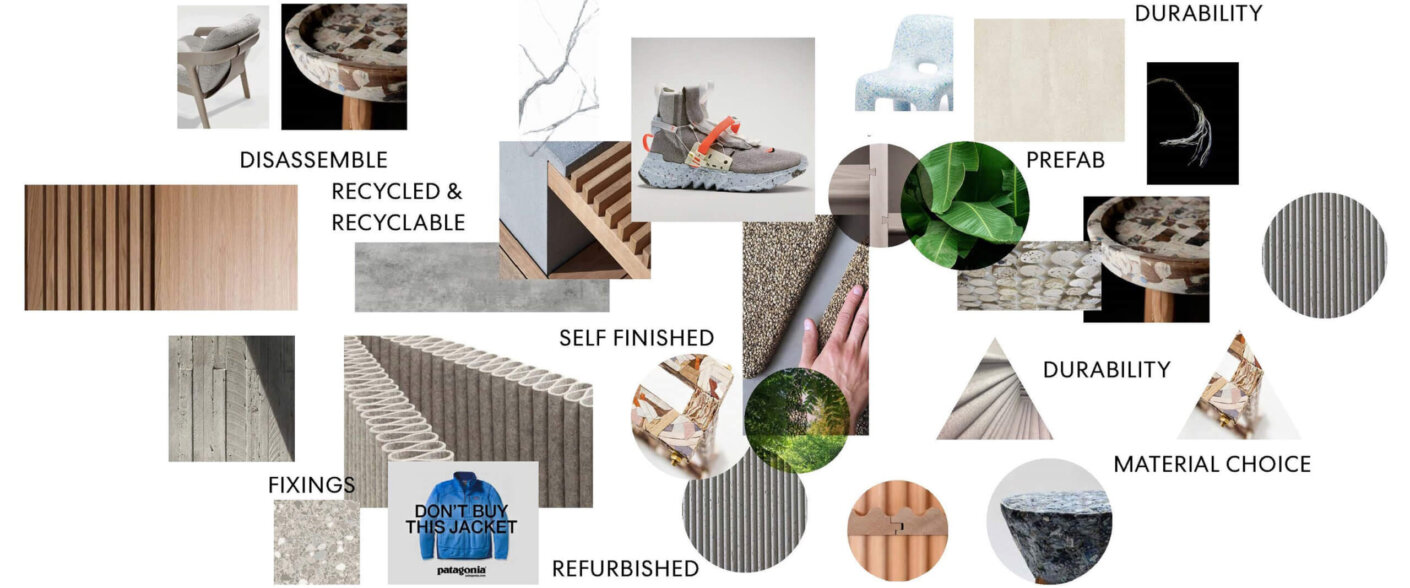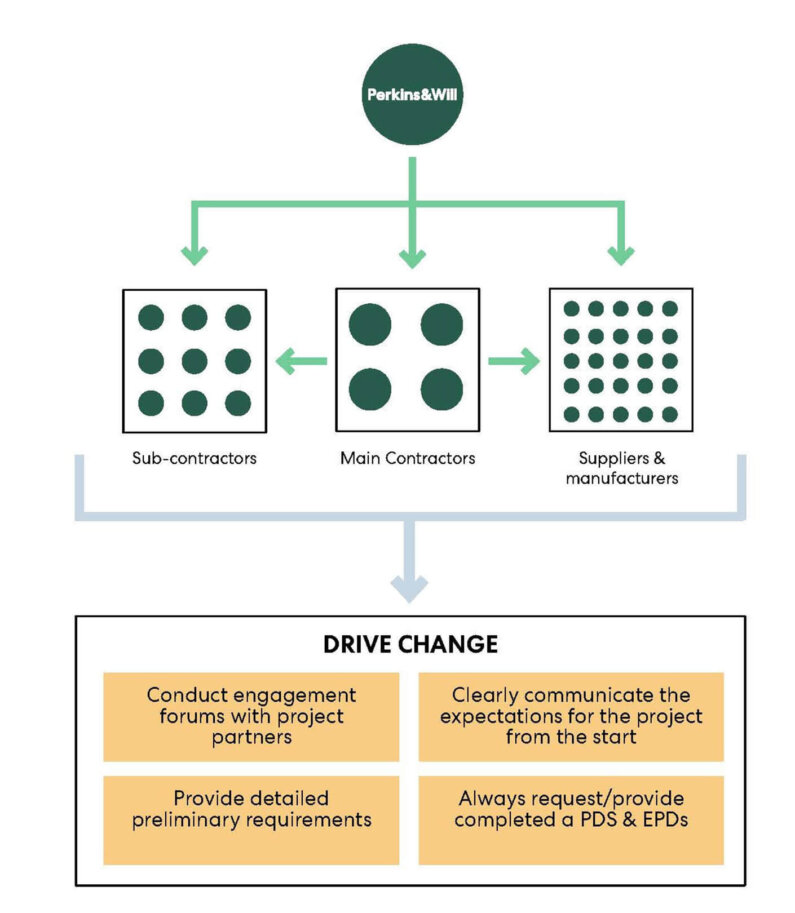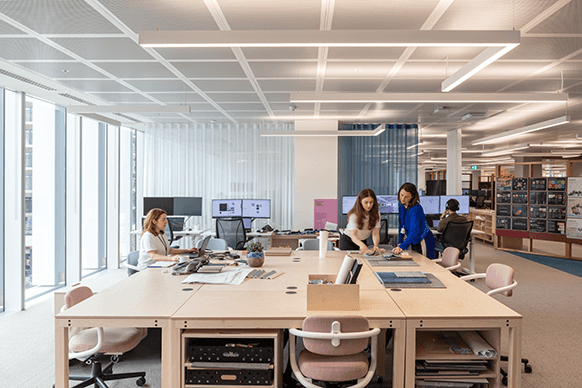Judith Everett, Chief Operating Officer at The Crown Estate, said: “We welcome this report and the position that Perkins&Will are taking to advance net zero in the built environment. Bringing a space to life for people to use draws on the expertise and skills of many different professions and organisations, requiring collaboration across the whole value chain. Making impactful progress will take all of us across this ecosystem working together to find innovative ways to eliminate waste and ensure that we make rapid advances in meeting net zero ambitions; re-programming how we design, develop and operate space. It’s the leadership we want to deliver for our customers, people and wider society.”
Adam Strudwick, principal at Perkins&Will, said: “Building on our 2019 net-zero architecture pledge, this net-zero carbon interiors pledge is the next stage in achieving our goal of delivering net-zero embodied carbon buildings.
“By focusing on the continuous use of resource, circular design principles and supply chain engagement our team will be pivoting to design projects in a new way that will enable us to reach this goal. It is critical that change happens now.”
Steven Charlton, principal and managing director at Perkins&Will from 2018-2020, said: “Many of our clients have already committed to being carbon neutral or negative and as such we have a responsibility to help them on this journey. Fit-out is responsible for nearly 40% of carbon in a building, and efforts must be made to reduce this. We believe that innovative design can play a fundamental role in significantly reducing this footprint by creating places that are truly energy efficient from cradle to grave.
“As with all big aspirations, this is work in progress, but this is the next step towards changing our futures. This manifesto provides us with a clear plan to achieve our net-zero embodied carbon target for interiors. It incorporates key milestones which we will use to track our progress along the way. We are committed to this pledge, and I hope that as we engage more with our clients and industry partners, we can develop and increase the presence of net-zero carbon buildings across the country.”
Sunand Prasad, co-founder of Penoyre & Prasad, said: “The cycle of replacing fit-out with brand new materials every few years generates massive waste and carbon emissions. New ways of designing and constructing interiors are urgently needed, but they also offer exciting innovation challenges.
“Rather than seeing energy, carbon and waste as compliance issues that increase costs and inhibit the imagination, we need to harness creativity and technology to bring zero carbon and the circular economy into the world of fit-out.”
In April 2020, Perkins&Will’s Vancouver and Calgary studios announced a similar undertaking in support of climate change action. For all clients and projects in Western Canada, the studios now offer customized Carbon Impact Statements at no additional cost. The Statements build upon best practices to limit “operational” carbon—that is, greenhouse gases (GHG) emitted during the project’s operations phase—through the integration of passive design measures, minimization of energy loads, optimization of systems, and integration of energy renewables. The Statements also include recommendations on the use of low-embodied-carbon materials, striving to limit GHGs emitted during the materials’ life cycle.




